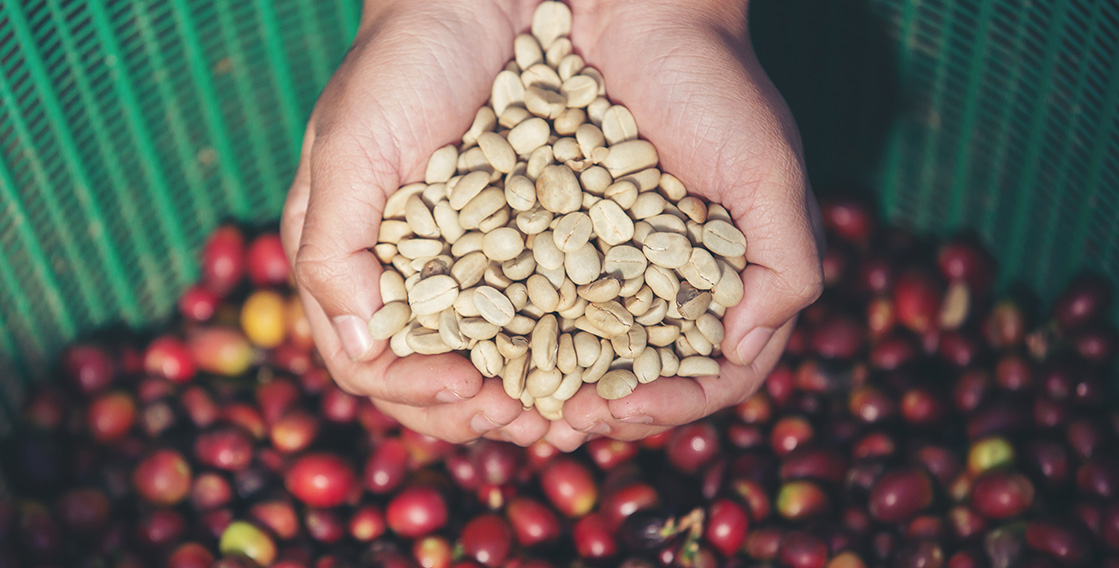
The Perfect Christmas Gifts for Tea & Coffee Lovers | Penningtons Tea & Coffee
Finding the perfect Christmas gift can be tricky but if your loved ones adore great tea or coffee, you’re already

Coffee is one of the most widely consumed beverages in the world, and at the heart of this massive industry lies green coffee—raw, unroasted coffee beans that serve as the foundation for every cup of coffee. Green coffee is more than just an ingredient; it is a highly traded global commodity, influencing economies, markets, and livelihoods across the world.
What is Green Coffee?
Green coffee refers to coffee beans that have been processed but not yet roasted. These beans come from coffee cherries, which are harvested, dried, and hulled to reveal the raw seed inside. Once in this state, green coffee is ready for export to roasters, who then transform it into the familiar roasted coffee used in homes, cafés, and restaurants worldwide.
Green Coffee as a Commodity
As a commodity, green coffee is one of the most traded agricultural products on the planet. It is primarily bought and sold on international markets, with its price determined by factors such as supply and demand, climate conditions, and global economic trends. Coffee futures contracts, traded on major exchanges like the Intercontinental Exchange (ICE), allow buyers and sellers to lock in prices and hedge against market fluctuations.
The two main types of green coffee traded are Arabica and Robusta. Arabica, known for its smooth, complex flavours, is typically grown at higher altitudes and represents around 60-70% of global coffee production. Robusta, which has a stronger, more bitter profile, contains more caffeine and is often used in espresso blends and instant coffee.
The Role of Coffee-Producing Countries
Green coffee production is concentrated in tropical regions along the Coffee Belt, which includes countries in South America, Africa, and Asia. The largest producers are:
These countries rely heavily on coffee exports to sustain their economies, providing jobs for millions of farmers and workers in the supply chain.
Sustainability and Ethical Considerations
As a globally traded commodity, green coffee faces challenges related to sustainability, fair wages, and environmental impact. Many coffee farmers struggle with price volatility, which can make it difficult to earn a stable income. To address these concerns, certifications such as Fair Trade, Rainforest Alliance, and Organic aim to promote ethical sourcing, environmentally friendly practices, and better conditions for farmers.
In recent years, there has been a growing movement toward direct trade, where coffee roasters work directly with farmers to ensure fair compensation and maintain higher quality standards. Consumers are also becoming more aware of the impact their coffee choices have on the environment and the livelihoods of coffee-growing communities.
The Future of Green Coffee as a Commodity
The global demand for coffee continues to rise, driving innovation in the green coffee trade. Climate change poses a significant threat to coffee production, with rising temperatures and unpredictable weather patterns affecting yields. As a result, researchers and producers are exploring more resilient coffee plant varieties and sustainable farming practices to secure the future of coffee.
Additionally, advancements in technology, blockchain, and AI are improving transparency in the supply chain, helping buyers and consumers trace the journey of their coffee from farm to cup.
Why Has the Price of Green Coffee Risen So Much?
In recent years, the price of green coffee has surged due to several key factors:
If you’re looking for high-quality green coffee, Penningtons Tea and Coffee Ltd is your trusted source. With a commitment to excellence and sustainability, Penningtons offers a carefully curated selection of Arabica and Robusta beans, sourced from the finest coffee-growing regions. Whether you’re a home roaster or a commercial coffee business, our green coffee selection meets the highest industry standards.
At Penningtons Tea and Coffee Ltd, we prioritize ethical sourcing, ensuring that our coffee comes from farms that practice sustainable and fair trade methods. Conclusion
Green coffee is much more than an unroasted bean—it is the backbone of the global coffee industry, shaping economies, cultures, and daily rituals worldwide. As both demand and awareness of sustainability grow, the coffee trade must continue evolving to support farmers, protect the environment, and ensure that coffee lovers everywhere can continue to enjoy their favorite brew for generations to come.
For the best hand roasted coffee beans, specialty blends, and ethically sourced coffee, explore the range at Penningtons Tea and Coffee Ltd today. Discover how our commitment to quality and sustainability can enhance your coffee experience!

Finding the perfect Christmas gift can be tricky but if your loved ones adore great tea or coffee, you’re already

Discover how to brew tea perfectly every time with Penningtons’ expert guide to temperatures, timing, and techniques for every blend.